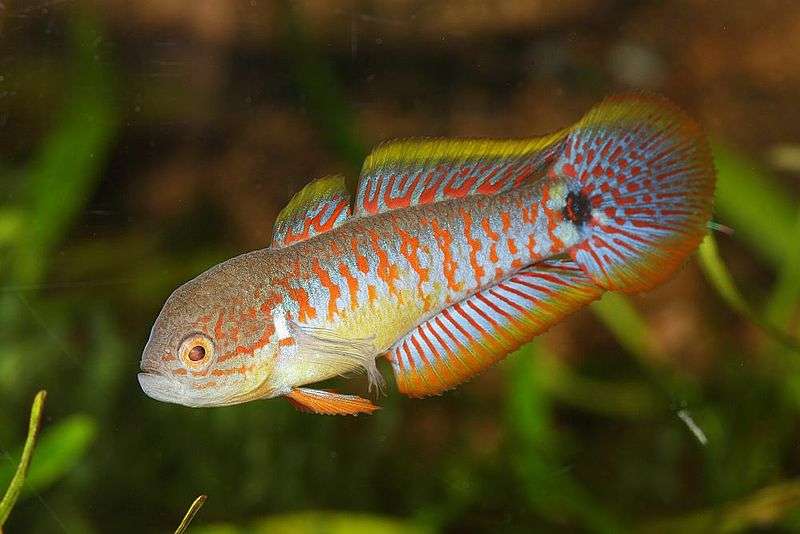
Size
For this species, a maximum length of 7.5 cm has been noted (3.0 in).
Physical Characteristics and Behavior
Peacock Gudgeons are a kind of silvery-blue fish with pink, yellow, and black patches sporadically scattered across their body and fins. The main body colors are a yellow belly and red lateral dotted streaks. On each side of the body, right above the beginning of the caudal fin, there is a large black hole that can be seen. Tateurndina ocellicauda may be kept with other species who also exhibit a peaceful disposition because of this characteristic. It is better to keep male Tateurndina ocellicauda in pairs or, preferably, in a harem with one male and numerous females because they can be aggressive toward other males.
Habitat
It lives in the streams, ponds, and rivers on the island. Its classrooms are situated in warm, muddy, forested waters. The water should have a pH of 6.5 to 7.5, a hardness of 5 to 10, and a temperature of between 72 and 79 degrees Fahrenheit (22 and 26 degrees Celsius).
Keeping as Pet

- Care
You may finally decide whether to bring a peacock gudgeon home now that you have all the necessary background information. But before you take action, there are a few crucial considerations that you must make. In comparison to other fish, this species’ maintenance requirements are negligible. However, this peculiarity does not give you carte blanche to subject them to any prevailing circumstances. To allow your fish to live comfortably without endangering their health, you must create a fairly neutral and steady atmosphere.
- Tank Size
Since you already know how big Peacock Gobies are, it is clear that these fish don’t require a huge aquarium. You have the choice of a smaller tank. Because gudgeons also dislike swimming a lot, you can load the tank with ornaments. We advise a 15-gallon tank as the bare minimum size for the Peacock Gudgeon. The size of the tank increases comparatively as the number of fish increases. It’s important to remember that getting a larger tank is always preferable to overcrowding your fish in a smaller one. Some people make the error of buying a ten-gallon tank, which causes them problems after a few years.
- Water Requirements
Try to as closely as possible recreate the peacock gudgeons’ natural environment if you want to provide the finest conditions for them. As discussed previously, gudgeons are frequently found in shallow water locations which are not fast-moving. Their ponds frequently contain a lot of vegetation, which keeps the entire structure filled. By putting things in their fish tank, you could try to do that. Other technical specifications include:
- Water temperature: 22.2-26.1 °C (72 to 79 °F).
- pH range: 6 to 7.8 ( 7 acts as a great middle-ground)
- Hardness of water: 5–12 dKH
- Diet
Peacock gudgeons are favoured above other live animals that are high in protein. You will need to pay close attention to their diet because they are highly specific about it. Gudgeons rely on the tiny insects and larvae they discover in the shallow waters of their natural habitat to thrive. If you want to provide them the same diet, you can choose live snacks. These fish can also be fed dry foods and frozen foods with a respectable conversion rate. You won’t have any trouble locating these supplements because there are numerous live options, such as bloodworms, accessible. With a healthy diet, these live foods will improve their quality of life and cause their bodies to become enormously colorful.
- Tank Mates
The list of fish that get along best with Peacock Gudgeons is provided below.
- Catfish Cory
- Harlequin Rasbora
- Ember Tetra
- Celestial Pearl Danios
- Bumblebee Goby
- Apistogramma
- Cherry Barb
- Kuhli Loach
Table





